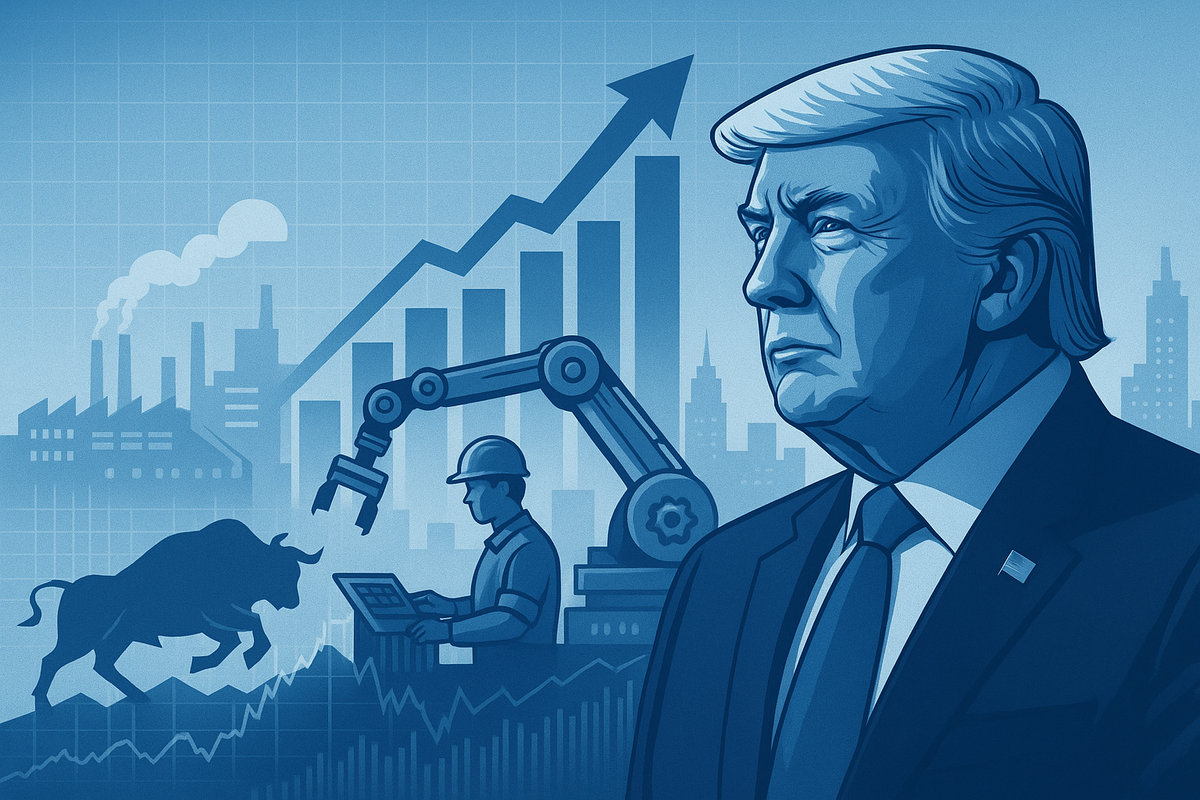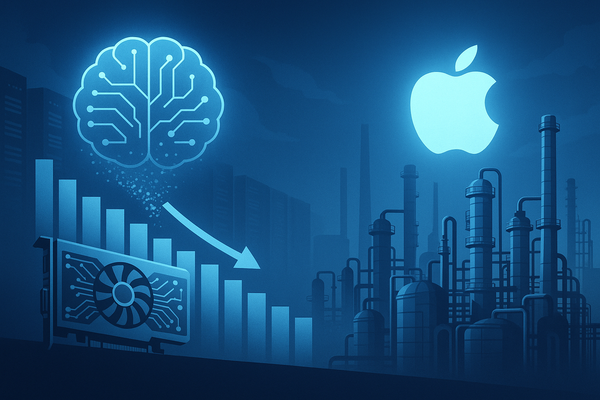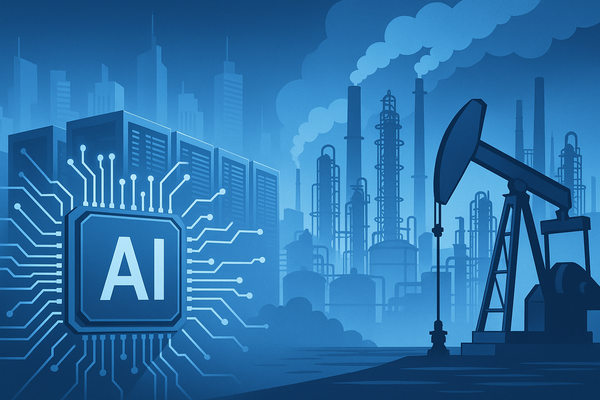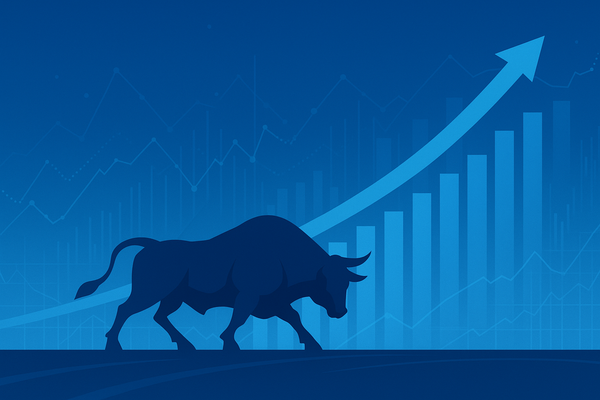Productivity, a 1920s Replay! Trump Right Again!

America’s next economic expansion won’t be powered by stimulus or speculation, it will be powered by productivity. What we are witnessing today is the early phase of a generational transformation in the U.S. economy, one that mirrors the supply-side renaissance of the 1920s under President Calvin Coolidge. This shift is being accelerated by the Trump administration’s new border and immigration enforcement policies, which, contrary to popular assumption, represent one of the most consequential structural reforms to U.S. growth in decades.
The mainstream debate frames border closure as purely political. The data show something very different. Restricting illegal immigration and deporting 1.3 million recent arrivals is reshaping the labor market in ways that will increase wages, drive automation, and unlock long-suppressed productivity growth across key industries. These changes align perfectly with the foundation of the ongoing bull market: a disciplined economy moving from debt-financed consumption to productivity-led expansion.
From Cost Center to Catalyst
In 2024, illegal immigration imposed an estimated $151 billion annual fiscal cost on U.S. taxpayers. Those expenditures boosted short-term consumption but eroded long-term growth by crowding out private investment and expanding government borrowing. Under new enforcement actions, those costs are being reversed.
According to the administration’s economic analysis, border closure and the removal of recent illegal entrants will generate $597.6 billion in fiscal savings over the next decade, turning a chronic drag into a powerful source of capital formation. The long-term trajectory is even stronger: by 2036, annual savings are projected to reach $95.5 billion, while the productivity gains from labor-market tightening and automation total another $84 billion per year.
In steady state, that’s a combined $180 billion annual tailwind to GDP, which is enough to permanently lift the economy’s productive potential. The fiscal rebalancing also means less crowding out of private investment, more business formation, and stronger capital markets. This is how fiscal discipline translates directly into equity strength: lower deficits free capital for innovation, technology, and growth.
The Productivity Revolution
The underlying mechanics of this transformation are straightforward and profound. With the flow of illegal labor sharply reduced, firms now face tighter labor markets that compel them to invest, innovate, and upgrade. This shift is setting off five reinforcing channels of productivity growth.
- Capital Deepening and Automation – Scarcity of labor pushes businesses to automate. Manufacturing, construction, logistics, and food service all increase spending on robotics, AI, and advanced machinery.
- Occupational Upgrading – Native workers move up the value chain. As low-skill roles disappear, Americans take on more technical, supervisory, and managerial positions with 15–20% higher wages.
- Process Innovation – Firms redesign workflows for efficiency, not just replacing workers but re-engineering entire systems for speed and precision.
- Eliminating the Productivity Penalty – Replacing undocumented workers, who often face skill mismatches and regulatory limits, raises per-worker output by 12–24%.
- Restored Private Investment – Each dollar saved in reduced government spending frees roughly 33 cents for private capital investment, adding another $37 billion to GDP annually.
Combined, these forces reverse four decades of stagnation in low-skill sectors and restore a virtuous cycle of higher wages, higher investment, and higher output.
Historical Parallels: Coolidge and the 1920s
A century ago, President Coolidge inherited a different America, but a familiar challenge. After years of high immigration and wartime debt, the U.S. faced wage stagnation and uneven industrial growth. Coolidge’s immigration restrictions and fiscal discipline helped spark a productivity boom that transformed the country from a working-class to a middle-class nation.
Manufacturing wages rose 6–8%, electrification spread, and mechanization revolutionized industry. The same sequence is emerging now: a constrained labor force, abundant capital, and accelerating automation. History shows that labor scarcity can be a catalyst for innovation.
Sectoral Impact: From Strain to Strength
- Manufacturing is leading the shift. Tight labor supply accelerates reshoring, automation, and investment in advanced production systems, lifting productivity 2% annually.
- Construction faces near-term shortages but is adopting modular and robotic building methods that dramatically raise output per worker by the end of the decade.
- Agriculture is moving toward mechanization and precision farming, with labor-intensive crops replaced by automated systems.
- Hospitality and Food Service are deploying self-service technology, AI logistics, and lean operations—fewer workers, higher pay, and stronger margins.
Each of these shifts supports the broader thesis: the U.S. economy is re-industrializing on a foundation of capital intensity and technological leverage. The result is not fewer jobs, but better jobs and faster productivity growth across the economy.
The Market Connection
For investors, the implications are clear. The 2–3 year adjustment period of 2025–2027 is the setup phase of a larger expansion. As the productivity effects compound through 2028 and beyond, GDP growth rises by an estimated 0.3–0.4 percentage points per year, fueling real earnings expansion even in a stable-rate environment.
This is precisely the environment that sustains a long bull market: tight labor, high investment, and structural efficiency gains. The result is a stronger, leaner economy—one where corporate profitability is driven by innovation, not financial engineering.
The Coolidge Doctrine, Reapplied
The lesson of both history and current analysis is clear: prosperity follows productivity. America’s economic strength has never come from open-ended consumption or government spending, but from disciplined policies that reward efficiency, capital formation, and human advancement.
The border policy is one such discipline. It restores balance to the labor market, frees capital for private enterprise, and sets in motion the very forces—automation, investment, innovation—that define every major American expansion.
We are witnessing the structural foundation of the next great bull market. The same way Coolidge’s policies helped build America’s middle class, the modern productivity revolution will build its next era of growth, one defined not by cheap labor, but by high value, high technology, and enduring strength.





